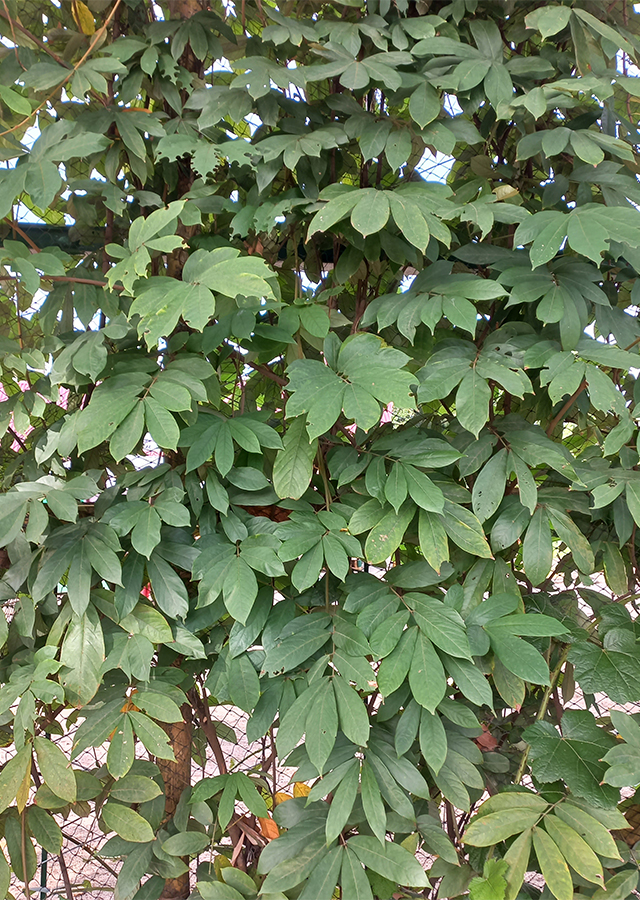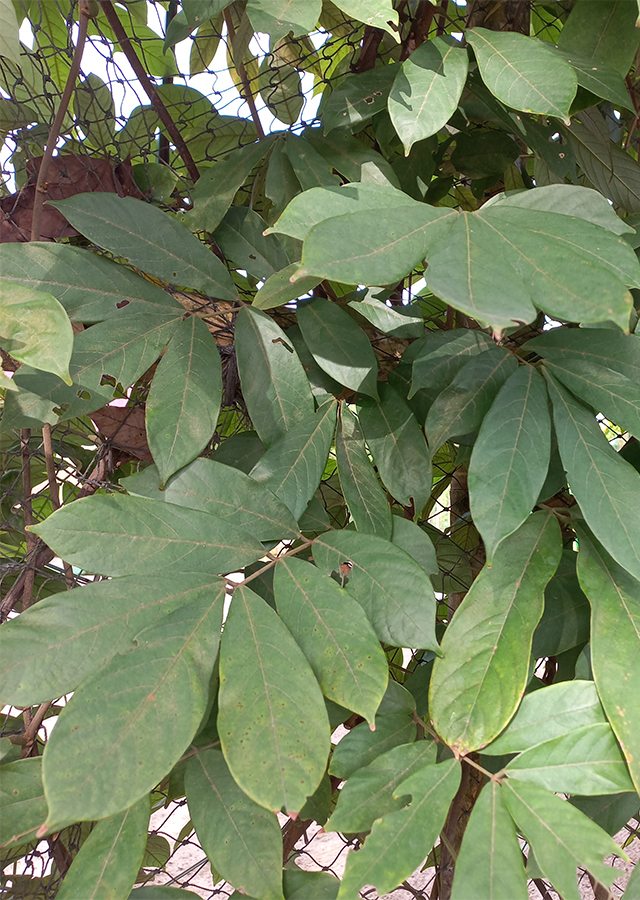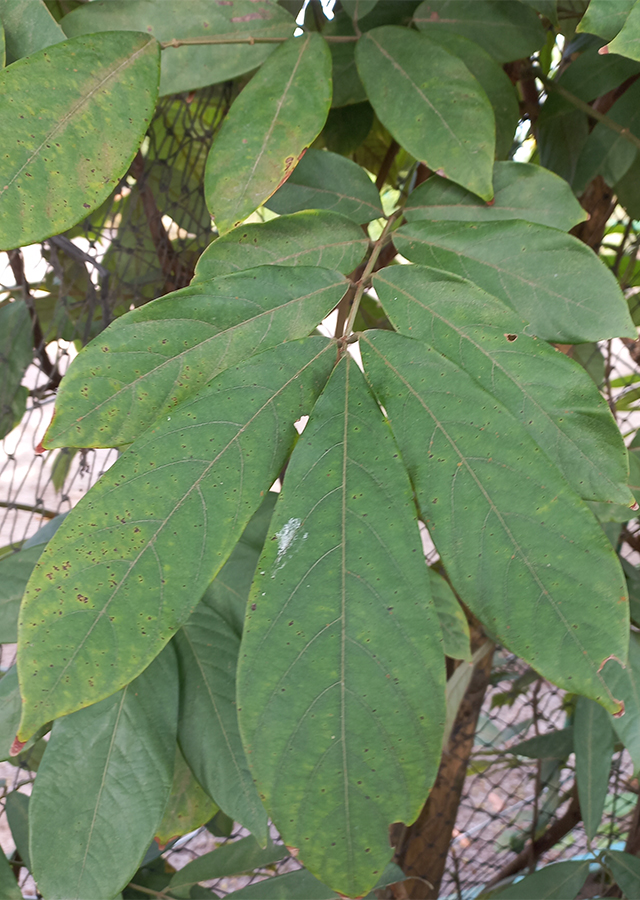Tuba Root
Derris elliptica (Wall.) Benth.
Fabaceae
Location in our garden
Principal



Synonym
Dalbergia elliptica Span.
Paraderris elliptica (Wall.) Adema
Dalbergia glaucescens Zipp. ex Miq.
Habitus
Climbers. A climbing, evergreen shrub that produces woody stems up to 16 m long
Part Used
Leaves
Roots
Stem
Growing Requirements
Full Sunshine
Need Shade
Habitat
Riverbanks
Forest
Roadside
Shrublands
Overview
Derris elliptica is native to tropical Asia. It can be found cultivated and naturalized in Africa, tropical and temperate Asia, Central America, the West Indies, and the Pacific region. The plant is widely cultivated in the tropics as one of the main sources of rotenone, which can be obtained from the roots. Rotenone has had a long traditional use as a fish poison and has been used as an insecticide and parasiticide since early in the 19th century.
Vernacular Names
Akar tuba (Malay), Hang lai daeng (Thai), Tugling-pula (Philippines), Hon (Myanmar), Ca bia (Cambodian), Mao yu teng (Chinese), Derriswortel (Dutch), Tubawurzel (German), Touba (French).
Agroecology
A plant mainly found in humid, lowland tropical areas, though it can also be grown at elevations up to 1,500 m. It grows best in areas where annual daytime temperatures are within the range 24 - 30 °C, but can tolerate 20 - 36 °C. It prefers a mean annual rainfall in the range of 1,800 - 3,500 mm, but tolerates 1,400 - 5,000 mm. Prefers a position in full sun or in light shade. Succeeds in most well-drained soils of at least moderate fertility with pH in the range of 5.5 - 7, tolerating 4.3 - 8.6.
Morphology
- Stems - young branchlets, leaf rachises, petioles, and petiolules densely brown pubescent. Branches glabrous when old, scattered with brown lenticels.
- Leaves - leaflet blades oblong, obovate-oblong, or oblanceolate, 6-15 × 2-4 cm, thickly papery, abaxially greenish white and finely brown sericeous, adaxially glabrous or only pubescent along veins, base cuneate to broadly cuneate, apex shortly obtusely acuminate.
- Flowers - calyx shallowly cup-shaped, densely sericeous. Corolla pink to whitish, 1.5-1.8 cm; standard suborbicular, 1.2-1.5 cm wide, outside brown pubescent, apex emarginate. Ovary densely pubescent.
- Seeds - 1-4 per legume.
Cultivation
Propagated by seeds.
Chemical Constituents
Rotenone, derrid, anhydroderrid, derrin, tubotoxin, tubain, rotenoids, lipid, deguelin, tephrosin, toxicarol, ceramide and poly-hydroxyl octadecenoic acid.
Traditional Medicinal Uses
- The plant is traditionally used for antisepsis and is applied to abscesses and against leprosy and itch, and sometimes as an abortifacient.
- The roots are used as emmenagogue.
- Infusion or decoction of roots with coconut oil applied to itchy lesions.
- Plaster of the root used for abscesses and leprosy.
- The stems are a blood tonic.
- Studies have shown mosquito larvicidal, acaricidal, insecticidal, antioxidant properties.
Part Used
Reference Sources
- Fern, Ken. Useful Tropical Plants. (2021). Derris elliptica. https://tropical.theferns.info/viewtropical.php?id=Paraderris+elliptica. 14-09-21
- Cabi. Derris elliptica. https://www.cabi.org/isc/datasheet/19971. 14-09-21
- StuartXchange. Philippines Medicinal Plant. (2019). Derris elliptica. http://www.stuartxchange.com/Tubli.html. 14-09-21


